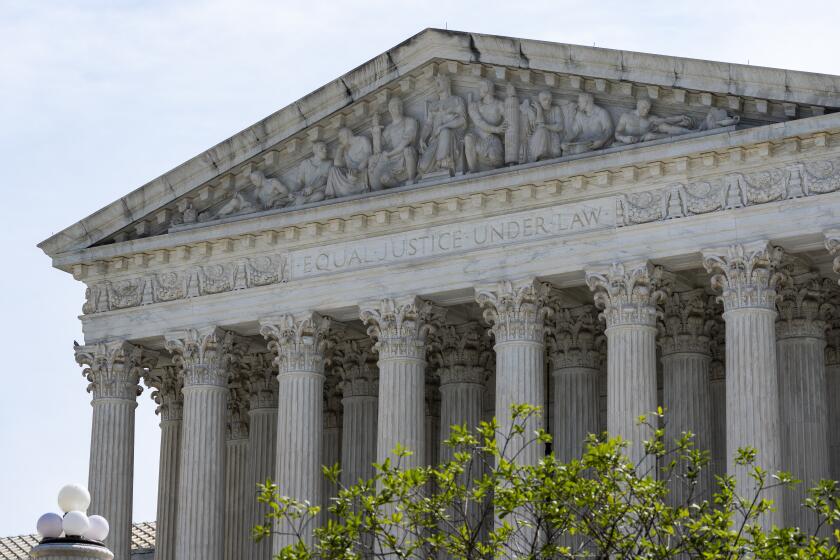Plan Asks $48-Million Subsidy for Hollywood Project : Land use: Councilman Mike Woo says helping the vast Promenade complex will bring important tax revenue. Close council scrutiny of the proposal is expected.
- Share via
Los Angeles city officials Monday announced a proposal to use $48 million in taxpayer funds to jump-start a stalled Hollywood development project viewed as the cornerstone of the mammoth redevelopment effort for the movie capital.
The $300-million Hollywood Promenade project--a vast commercial, retail and entertainment complex that would wrap around the famous Mann’s Chinese Theatre--was thought by many to be doomed. Developers had said the poor economic climate and worsening urban decay in Hollywoodmade it impossible for them to move forward without an infusion of city money.
“A lot of people thought this project was dead, but I’m here to announce it is very much alive,” Councilman Michael Woo said at a news conference at the proposed Hollywood Boulevard site, as nearby tour buses discharged dozens of camera-toting visitors to the theater. “After many months of talks, we have a project today that gives us what we want without giving away the store.”
The Times reported Nov. 1 that after five years of planning in which Melvin Simon & Associates had vowed to build the project with no taxpayer money, the developer was seeking $70 million from the city Community Redevelopment Agency.
Woo said a compromise was reached in which the CRA would pay $4 million a year over 12 years and, in exchange, would become a partner in the project. Details have to be worked out, but the CRA and the city would get 25% of the project’s operating profit each year and “would bear no responsibility for losses,” Woo said.
CRA officials said such a partnership was unusual but not unique.
The proposed subsidy must gain the approval of the CRA board and City Council. Some council members already have pledged to examine any expenditure of taxpayer funds on the project. Woo acknowledged that he expected “an unprecedented level of scrutiny.”
“But this is a project whose time has come,” Woo said. “It will ultimately be approved.”
The 1.1-million-square-foot Promenade complex, long regarded as the heart of the $922-million redevelopment effort, would include an open-air retail shopping center, hotel, office space, restaurants and nightclubs. In addition, it is to include two movie museums situated on opposite sides of the Chinese Theatre and a 3,400-space garage underneath.
Woo said that failure to go forward with the project could be devastating to the revitalization project.
“People have been asking me for years what was happening with the Promenade,” said Woo, who represents Hollywood. “They’ve been poised and waiting to follow Melvin Simon’s lead.”
Woo and CRA Chairman Jim Wood said they would have preferred that the project be built without taxpayers’ money, but that appears to be impossible given the economic climate.
Wood defended the proposed subsidy on the grounds that the completed project would create 3,000 permanent jobs and, over a 22-year period, generate an estimated $101.5 million in hotel, sales and parking tax revenues and another $90 million in property tax revenues. The figures are for the period between 1994, when some parts of the project are set for completion, and 2016, when the CRA’s involvement in the effort is scheduled to end.
“The numbers,” he said, “show it is a good investment in Hollywood.”
Michael Marr, vice president of development for the Indianapolis-based developer, said Melvin Simon had to ask for the subsidies because “the project became very expensive and the marketplace changed dramatically.”
“This project has been fraught with problems since we started, and we expect additional hurdles,” Marr said. “But it’s definitely a major day for us, for Hollywood and for Los Angeles.”
Meanwhile, negotiations were continuing with a second major developer that also is seeking a city subsidy. Backed by Robert M. Bass, a member of the wealthy Bass family of Texas, the project calls for construction of a 1.7-million-square-foot “urban village” with 1,000 apartment units, an office complex and retail stores. CRA officials declined to discuss the status of those negotiations.
More to Read
Sign up for Essential California
The most important California stories and recommendations in your inbox every morning.
You may occasionally receive promotional content from the Los Angeles Times.













